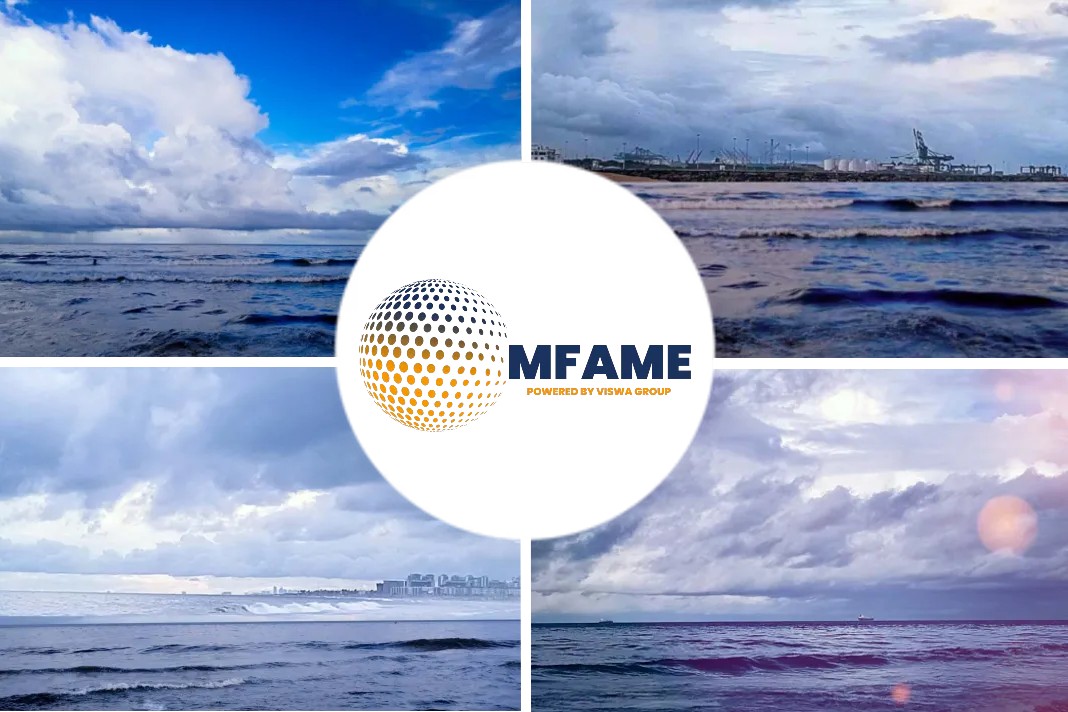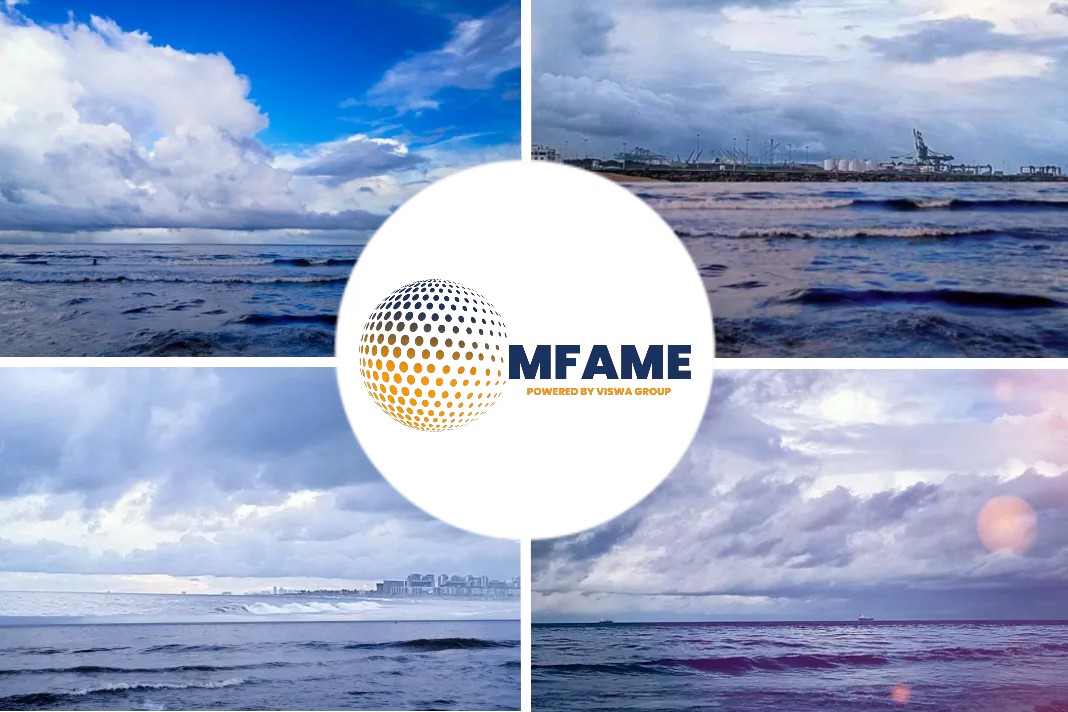Since joining Wärtsilä a year ago as general manager of business intelligence, Andrei Voinigescu has worked to apply his experience with digital platforms and emerging business models to the marine segment. He says the next decade will be pivotal for the shipping industry as it works to reduce greenhouse gas emissions, says an article published in Wartsila.

Today we are highlighting that interview in order to know what role cleaner fuels and big data will play in this transition. Here’s an excerpt of the interview as published on Wartsila website.
1. Looking ahead to the next 10 years, what do you think are the key trends that will impact shipping in the coming decade?
One thing that’s going to be a big factor in the 2020s is the transition towards LNG as a fuel source beyond the cruise and ferry segments where we see traction today to container ships, cargo ships – the merchant fleet as a whole. There’s also going to be more emphasis on the use of “big data” – software and data-driven operational excellence, voyage optimisation, and fleet utilisation optimisation solutions for reducing energy usage. That’s going to enable better operations for ship owners, but also lower greenhouse gas emissions for the overall fleet.
Another very interesting potential trend shift to monitor is whether we have reached peak globalisation in trade flows of physical goods. Are we going to continue to see growth in tonnage being shipped worldwide over long distances, or are we going to see more interregional trade, with manufacturing shifting closer to where goods are being consumed?
2. The maritime shipping market faced disruption in 2019 due in part to mounting economic uncertainty. Did that produce less volume this year? What’s the possible outlook for 2020 and beyond?
In spite of the overall narrative of trade tension, uncertainty, and reduced vessel contracting activity, the underlying economic drivers for shipping are still healthy. The growth in gross tonnage being shipped by sea has continued in 2019. It’s slowed down, but the long-term trend is still upwards. From a purely tonnage perspective, there’s slow growth, and from an earnings perspective, ship owners were able to charge significantly more this year than last year in most of the shipping segments.
3. There’s been a lot of discussion about the IMO 2020, but there are other targets looming in 2030 and 2050. What do you think will have to be done for these targets to be met?
I don’t think we’re going to see big movements without significant regulatory pressure. In the near term, the only viable alternative fuel is LNG from a commercial perspective. That’s taking into account price, production capacity, distribution networks, bunkering facilities as well as the state of the technology in terms of storage and conversion of fuel to energy. If you look at things like biodiesel and hydrogen or ammonia, the infrastructure is not there, and the price is way too high for anyone to adopt them for purely commercial reasons. That’s not likely to change in the next 5-10 years.
It’s a chicken-and-egg problem. No one’s going to build the infrastructure and distribution networks for fuels like hydrogen and ammonia so long as there’s no demand, but there’s no demand without the infrastructure and distribution networks. There are two angles that are going to change that. One of them is long term price reduction from technological improvement, but I think that regulation has a much larger role to play in spurring that initial research and investment. I see the role of regulation as creating a level playing field. No ship owner or charterer can voluntarily adopt ammonia and remain competitive with their peers as long as it’s more expensive than HFO. But if everyone is forced to adopt it, those excess costs can be passed on ultimately to the end consumer.
4. You mentioned an expansion of the use of LNG in the cruise segment in particular. What’s driving that change?
I think it’s fair to say that for cruise lines, this change is largely driven by end customer demand. Cruise line customers are a lot more cognizant of the impact their recreational activities are having on the environment, so they are much more likely to demand from a cruise line that they provide green operations. Also, the larger cruise companies have adopted a policy to emphasise environmental friendliness and that is very much playing into the LNG adoption equation.
5. There have been a number of studies showing that consumers are becoming more aware of the impact their own choices on the environment, particularly in the e-commerce segment. However, this discussion often doesn’t include the impact of shipping the products they consume. Do you think there’s any way consumers can increase pressure on the shipping industry?
I think right now there is a lack of transparency in terms of the actual carbon impact of something you might order online. The awareness aspect is something that is being actively worked on by a number of start-ups that are trying to provide more visibility into the supply chain and where carbon is being produced by that final product and larger companies are looking heavily at providing that transparency because consumers are asking for it.
I think it’s beneficial for companies like Wärtsilä to be a part of that conversation because the more transparency there is into the amount of greenhouse gas emissions that are being attributed to the shipment of these products, the more pressure end customers can put on the different parties along the supply chain to adopt more environmentally friendly solutions, and ultimately we are a solution provider. We’re here to provide LNG engines or navigation solutions that allow ships to reduce their overall energy use. I think we could be taking a more active role in highlighting to our customers that there is end user pressure here, and we can already provide concrete solutions that reduce greenhouse gas emissions today. We already have solutions that allow you to operate your existing assets in a more environmentally friendly way.
6. You have a computer science background. Do you think there’s a role for big data, increased digitalisation or AI in helping the marine industry become more environmentally friendly?
I always try to boil down problems to efficiency or optimisation problems. For the past couple of years, we’ve been exploring ways we can optimise the existing operations of our customers, and we’ve started providing solutions like the Wärtsilä Fleet Operation Solution and Operim that are there to optimise the existing operations of customers without requiring them to install new hardware on board or design entirely new ships. The more data we are able to collect, the better we are going to be at optimising operations, so there’s absolutely a role for data collection in conjunction with the deep expertise we have across the whole portfolio of equipment on board to provide energy savings.
7. What would you say to customers who are concerned about the security of their data?
I think there’s a lot of confusion around this topic. Customers may have heard buzzwords like cybersecurity, and they are always concerned about sharing data about their operations because they see that as a commercial asset, and they don’t want that data falling into the hands of a competitor. In my opinion, these concerns come from a lack of understanding about what we’re trying to do and what security measures we’ve put in place both from a cybersecurity perspective and also from a perspective of not sharing commercially sensitive data with anyone else. I don’t want to downplay the cybersecurity risk, or the data privacy issues, but I think we have to do a better job of explaining to our customers that we are taking these concerns into account and are designing our products and services around them.
8. Why hasn’t there been a major disrupter in the marine industry to encourage change, say, along the lines of Elon Musk and electric vehicle production?
Despite moving 90% of the world’s physical goods, the maritime industry is still a small industry. There are probably only around 130,000 ships involved in global trade and the number of ship owners is in the thousands. It’s a niche industry in many ways and doesn’t garner the same public attention as the automotive industry, so there’s fewer bright young minds focusing their attention on solving shipping’s problems.
The other point I would make is that if you look at the technology, there’s a big difference between what can be done with ships and what can be done with cars. Batteries are a much more viable solution in the automotive space simply because the batteries available today already have the energy density needed to enable commercially viable trips by road. The same isn’t true for deep-ocean shipping. Consider if you’re sending a load of goods from Australia to China, for example. You need to propel a 100,000-tonne ship thousands of miles compared to hundreds of miles for an electric truck that weighs 30, 40 tonnes.
I think that’s why the conversation about cleaning up emissions in shipping has focused on alternative fuels like hydrogen and ammonia. Liquid fuels are a much more energy dense storage medium than batteries, so they allow ships to store enough energy on board to enable the kind of long-distance deep-ocean journeys that form the backbone of global shipping.
9. Do you think that using technologies like wind turbines or solar panels on ships are at all viable?
I don’t think right now the technology is there for renewable energy sources to replace combustion engines as the primary source of propulsion on board ships. Solar panels and wind-assisted propulsion solutions can provide some fuel savings, and that’s the ambition level now, to provide for example 10% of the energy needed for propulsion. But if you’re talking about halving or eliminating greenhouse gas emissions from shipping, that’s going to require alternative fuels that are produced in a carbon neutral way. So that can be biodiesel, which is available in limited quantities today, or that can be hydrogen or ammonia that are generated through excess capacity from photovoltaic plants or wind turbines — Power-to-X. If the fuel is produced in a way that doesn’t generate excess carbon, then burning it in an internal combustion engine doesn’t release any additional greenhouse gas into the atmosphere.
That’s really the path we see going forward. From 2030 to 2050, we’re going to see a transition to fuels produced in a carbon-neutral way and that’s going to allow the maritime segment to play its part in the global effort to reduce greenhouse gas emissions.
Did you subscribe to our daily newsletter?
It’s Free! Click here to Subscribe!
Source: Wartsila















